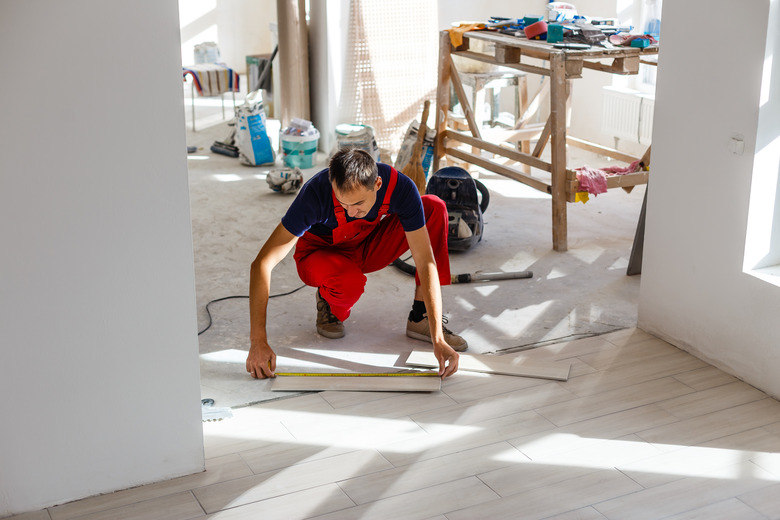How To Replace A Rotten Subfloor Under A Wall
Replacing the subfloor under a wall is not a beginner's do-it-yourself project, especially if the wall in question is a load-bearing wall. That's because you'll need to shore up the wall to prevent it from collapsing while you remove the floor plate, any rotten studs and the rotten subfloor itself. You may also need to create a brace underneath the floor joists for extra support when removing the subfloor under a load-bearing wall.
If you're not confident that you can adequately shore up a wall and replace or support rotten wall studs or floor joists, then this is a project best left to the pros. However, if the wall is a non-load-bearing wall, you have a little more breathing room for flexing your DIY muscles and adding some useful hands-on experience to your skill set.
Assessing the Damaged Floor
Assessing the Damaged Floor
First, you need to assess the extent of the damage. If you haven't already, remove the floor covering (carpet, vinyl, etc.) on both sides of the wall to expose the damaged subfloor and give yourself space to work.
The next thing to think about is why the subfloor rotted in the first place. Have you fixed the source of the problem so that your new subfloor stays dry? Fix any leaking windows, doors, roof shingles or water pipes as well as any crawl space condensation, before you tackle replacing the subfloor under the wall.
Preparing and Demolishing the Drywall
Preparing and Demolishing the Drywall
Next, you need to determine if you're working with a load-bearing wall. If you are, stop and learn how to sufficiently shore up the wall on either side and from below. Be sure to also wear the proper personal protective equipment for sawing, especially safety glasses and a dust mask.
Now it's time to remove the drywall above the damaged floors. Use a circular saw cut to 3/8 inch, according to The Saw Guy, so that you only cut through drywall, not through any studs, pipes or wires, and adjust the height to 1/2 inch if needed. Proceed with caution as you cut out an area large enough for you to comfortably access the damage. Repeat on both sides of the wall and use a reciprocating saw to cut out any insulation that is in the way.
You should now be able to tell whether the wall studs or floor plates are damaged. Even if the floor plates (the horizontal boards connecting the wall studs) look unscathed, you still need to remove them in order to proceed with removing the floorboards under the wall. Unscrew them and use a rubber mallet to push them out further. Cut off the ends of any rotten wall studs at this point too.
Removing Floorboards Under Walls
Removing Floorboards Under Walls
Now there will be nothing in the way to prevent the subfloor from being completely removed. Just as you previously set your circular saw to the precise thickness of the drywall to avoid cutting any wires or pipes, you now need to set the saw height to the thickness of the subfloor. If the floor is so damaged that you can push out a section and examine the thickness, do so.
Otherwise, cut a small test section with a starting height of about 3/8 inch on the damaged edge furthest from any walls. Adjust the height of your saw to 1/2 inch and so on until you know the true thickness of your subfloor. Then, cut out the damaged subfloor in a rectangular shape so that all remaining edges are undamaged. Extend your cuts so that you expose half of a floor joist to make re-installation easier.
Once the floor joists are exposed, examine them for damage as well. Cut out any rotten sections and add additional wood on either side (called "sistering") to restore strength to the floor joists.
Putting it All Back Together
Putting it All Back Together
Now that you're done removing the subfloor, you just need to work backwards as you make repairs. Fix the floor joists if necessary, and then add a new subfloor panel. Restore the floor plate and replace any damaged wall studs. Finally, re-install insulation and drywall, paint the wall and replace the floor covering.
